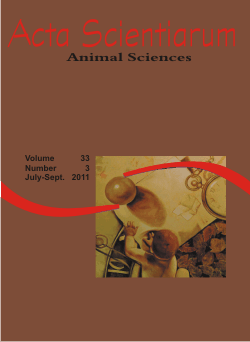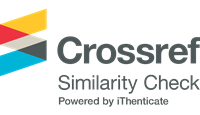<b>Behavior of Santa Inês sheep, different colorations, grazing</b> - doi: 10.4025/actascianimsci.v33i3.9974
Keywords:
Adaptation, climate, thermal comfort, ethology
Abstract
The objective of this experiment was to evaluate the behavior in Santa Ines sheep, different colorations, under conditions of grazing. The experimental design was completely randomized, with three coat colors (white, brown and black) as treatments and 7 replications in a split plot arrangement with the coat color in the plot and period in the sub-plot. The observations of the variables analyzed were four experimental periods where each period contained three days of behavioral observations. Since the variables: grazing time, rumination time, leisure time, drinking water and other activities The observations were made every 10 minutes from 6 a.m. to 5 p.m. No significant interaction (p > 0.05) between period and color of the coat for any of the behavioral traits studied. The periods affected all behavioral activities. The hair coat color influenced the activity mulling standing at the Sun, the white animals had longer (p <0.05) than the brown and black, and in other activities in total, the animals had longer brown (p <0.05) than whites and blacks. The climatic element most associated with the visit to the water source and the animals stay in the shade was the maximum temperature.Downloads
Download data is not yet available.
Published
2011-04-26
How to Cite
Santos, M. M. dos, Azevedo, M. de, Costa, L. A. B. da, Silva Filho, F. P. da, Modesto, E. C., & Lana, Ângela M. Q. (2011). <b>Behavior of Santa Inês sheep, different colorations, grazing</b> - doi: 10.4025/actascianimsci.v33i3.9974. Acta Scientiarum. Animal Sciences, 33(3), 287-294. https://doi.org/10.4025/actascianimsci.v33i3.9974
Issue
Section
Animal Production
DECLARATION OF ORIGINALITY AND COPYRIGHTS
- I Declare that current article is original and has not been submitted for publication, in part or in whole, to any other national or international journal.
The copyrights belong exclusively to the authors. Published content is licensed under Creative Commons Attribution 4.0 (CC BY 4.0) guidelines, which allows sharing (copy and distribution of the material in any medium or format) and adaptation (remix, transform, and build upon the material) for any purpose, even commercially, under the terms of attribution.
Read this link for further information on how to use CC BY 4.0 properly.
0.9
2019CiteScore
29th percentile
Powered by 








































